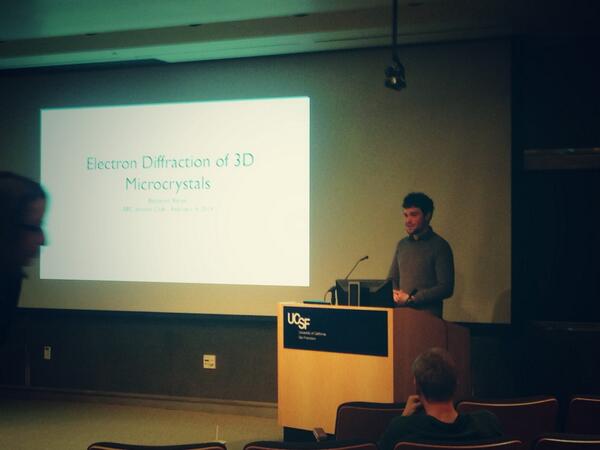
Benjamin Barad, Ph.D.
New Faculty at OHSU
I am a structural biologist with a special interest in emerging computational and experimental methods in electron microscopy. In January 2024, I will be starting my lab at Oregon Health & Science University in Portland, OR. The focus of my lab will be leveraging cryo-electron tomography as well as novel computational analyses developed in the lab to study the remodeling of mammalian organelles by intracellular bacteria and their effector proteins. Cryo-electron tomography has the capacity to reveal both protein localization and structure at the same time as cytoskeletal and membrane ultrastructure within cells within a single dataset, and the long term goal of my lab is to build workflows that unify and contextualize protein structure and cellular ultrastructure into a multi-scale understanding of cellular function and regulation.
I completed my undergraduate degree in Biological Chemistry at Stanford University, where I worked with Elizabeth Sattely investigating bacterial degradation of the plant polymer lignin. While there, I grew to love the collective regulation of large-scale ultrastructural features of organisms (such as the plant cell wall) by individual enzymes. This is a passion that has continue to fuel my scientific path to this day.
I received my PhD in biophysics from UCSF in the lab of James Fraser, where I developed methods for the building and validating atomic models generated from single particle electron microscopy. I also developed novel computational analysis tools for time-resolved x-ray scattering experiments as well as investigating the mechanisms of activity of mammalian chitinases.
Previous to starting my lab, I worked as a postdoc with Danielle Grotjahn, using cryo-electron tomography of focused ion beam-thinned cells to quantify mitochondrial morphology and solve in situ protein structures. While there, I developed the Surface Morphometrics Pipeline, the ongoing development of which will continue in the Barad lab. I also developed automation advances that allowed the collection and processing of hundreds of tilt series, and used these advances to study changes to the architecture and regulation of mitochondrial fission in response to varied chemical and genetic perturbations. Some of that work is ongoing!
Beyond my scientific interests, I am excited about food and cooking, coffee, 3D printing, and games.